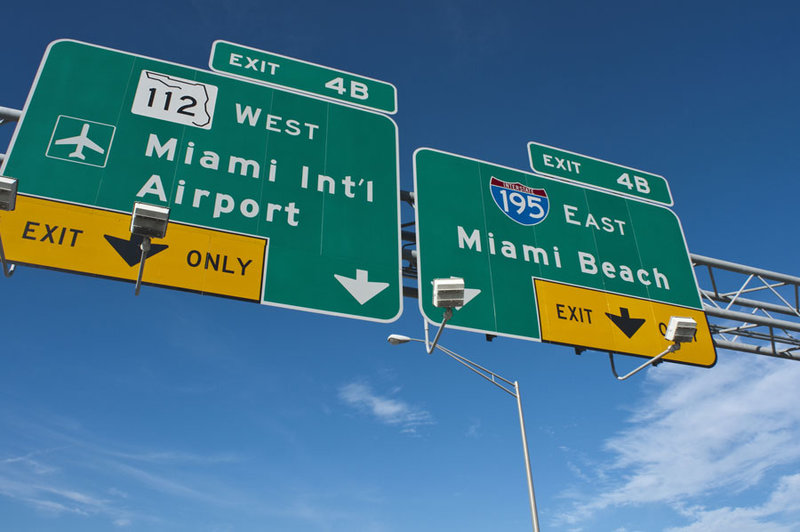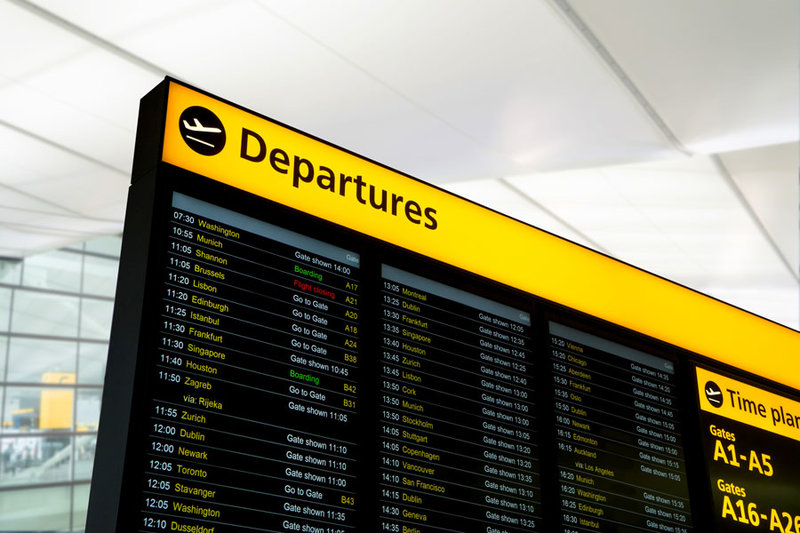Technology
Blockchain:
The future of flight data management?
IT technology firm SITA has built a private-permissioned blockchain system called FlightChain, which stores flight information and uses smart contracts to judge potentially conflicting information. Joe Baker learns more about the project from lead engineer Kevin O’Sullivan
L
eading digital currency Bitcoin is enduring a rocky start to 2018, with a sizeable drop in its exchange rate casting doubt on its sustainability. Nevertheless, the buzz behind blockchain platforms, which power crypto-currencies, remains persistent across the aviation sector.
For the uninitiated, a blockchain is essentially a digital database that records data shared between parties, with each set of data forming a ‘block’ along the chain. Every block is encrypted and can be accessed and verified by users across a network of computers.
Changes to the blockchain cannot be made without the agreement of the majority of users, making it a significantly more secure way of storing information. The entire chain is visible to all users across the network, preventing data from being lost or manipulated by cybercriminals, and removing the need for a third party – such as a bank – to verify transactions.
Blockchain’s role as a shared, decentralised digital ledger could enable more accurate exchange of flight information between airlines and airports. Last year, IT firm SITA announced the results of its FlightChain project, which investigated the potential use of blockchain for flight information storage and management.
The company created a private-permissioned blockchain for participants in the project, which included British Airways and three major airports. Each party provided flight data, which was validated and written onto the blockchain by a smart contract – a software program that automatically verified the data against a set of predefined business rules.
The goal of FlightChain was to find out how blockchain could create a single ‘source of truth’ for various data used by different stakeholders in the aviation industry. Here, SITA lead engineer Kevin O’Sullivan explains the problems that this could solve, as well as the potential pitfalls revealed by the FlightChain project.
Yusuf Akçayoğlu, CEO of İGA Airports Construction

Image courtesy:
Joe Baker: FlightChain focused on the suitability of sharing flight data. Can you provide examples of the kind of information being shared in the blockchain?
Kevin O’Sullivan: During the trial, British Airways, Geneva Airport, Heathrow and Miami International Airport provided flight data that was merged and stored on the blockchain. During this project, more than two million flight changes were processed by the smart contract and stored on FlightChain.

Image courtesy:
[Istanbul New Airport’s] contribution to the tourism sector is estimated to be $7bn
What is the ‘flight data problem’?
The issue is that there is no single source of the truth about flight data, and the data that does exist is not easily accessed by all parties. While there are many cases of airlines and airports collaborating to share flight data, this data still resides in separate silos. When there are flight delays, this results in differences between passenger apps, airport flight information display systems, and airline and airport agents. It can be hard for passengers and other stakeholders to know what the correct information is.

Image courtesy: Bychykhin Olexandr / Shutterstock.com
iBeacon technology will provide indoor directions, walking times to gates, lounge access and boarding alerts
Why might blockchain be more effective than other established technologies for solving this problem?
There are four key reasons why blockchain could be the right technology.
Blockchain implementations provide a cryptographically immutable transaction ledger that is distributed to all participants in the network. Thus all participants will have a complete copy of all transactions on the ledger and have confidence that the record of transactions is true and consistent for all participants.
[The system] provides a mechanism for multiple writers to update a common data set, where the data set is visible to all participants in the blockchain.
Blockchain has advantages over centralised/distributed databases in the case where there is an absence of trust between writers of the database. This is because all transitions are immutably recorded and shared on the ledger such that readers and other writers can decide whether to accept or ignore the transactions of any participant based on the rules specified in the smart contract.
The use of a smart contract allows different organisations to share control of the data through an approved and shared set of business rules codified by the smart contract. This disintermediation approach enables shared control of the data and presents a key differentiator in contrast to the trusted intermediary model exhibited by a centralised or decentralised database.
The report notes that a private-permissioned blockchain requires governance. Does this compromise it in any way?
The nature of blockchain means that some actions require the consensus of other participants so the governance body would in fact have more of a caretaker role. Our recommendation is that the governance should be carried out by an industry body, such as the International Air Transport Association or Airport Council International. The blockchain would therefore be set up and managed by a trusted organisation.
Is there any way that having a whole network of users might make data sharing less secure?
Blockchains are, like any database or network, potentially subject to security breaches. However, in a private blockchain it is important to put the right defences and monitoring in place to ensure it remains secure.
iBeacon technology will provide indoor directions, walking times to gates, lounge access and boarding alerts
Has SITA explored other potential uses of blockchain in the aviation industry?
SITA is also looking into the use of blockchain for self-sovereign identity in air travel. Self-sovereign identity will allow passengers to have improved control over their own data, and who it is shared with. At the same time it can enable governments to have improved confidence in the quality of data they receive about passengers at the point of arrival in a country.
At this stage, we have limited our research to flight status data because we needed to focus on one particular area. As I mentioned, flight status data provided a good opportunity. Our research has prompted interesting discussions across the industry and we are constantly examining other areas in which the industry could use blockchain technology. However, it is too soon to go into any more details because we are at the very early stages of blockchain deployment.
Why might more airlines and airports be convinced to turn towards blockchain in the future?
It isn’t really a question of convincing the air transport industry about the benefits of blockchain. It certainly could be a transformational technology for many industries and SITA’s research showed it can be of benefit in certain circumstances. However, it is very early days for the technology and a lot more work needs to be done before we reach the point of having fully operational commercial blockchain solutions.

Image courtesy:
iBeacon technology will provide indoor directions, walking times to gates, lounge access and boarding alerts
Key lessons from the FlightChain project
According to O’Sullivan, there were six key lessons learned during the FlightChain project. In order of importance, they are as follows:
- Any private-permissioned blockchain needs governance and it is important to select the right model
- It is still too early in the lifecycle of the blockchain technology to make a definitive recommendation about its use
- Smart contracts are likely to have an important role to play, however they do not have legal status so will need industry standards to make them truly usable
- Any system is only as strong as its weakest link, so security remains paramount
- For business to business use, a private blockchain is likely to be more appropriate than a public one
- A private blockchain has the performance, scalability and resilience to be a useful tool for the air transport industry